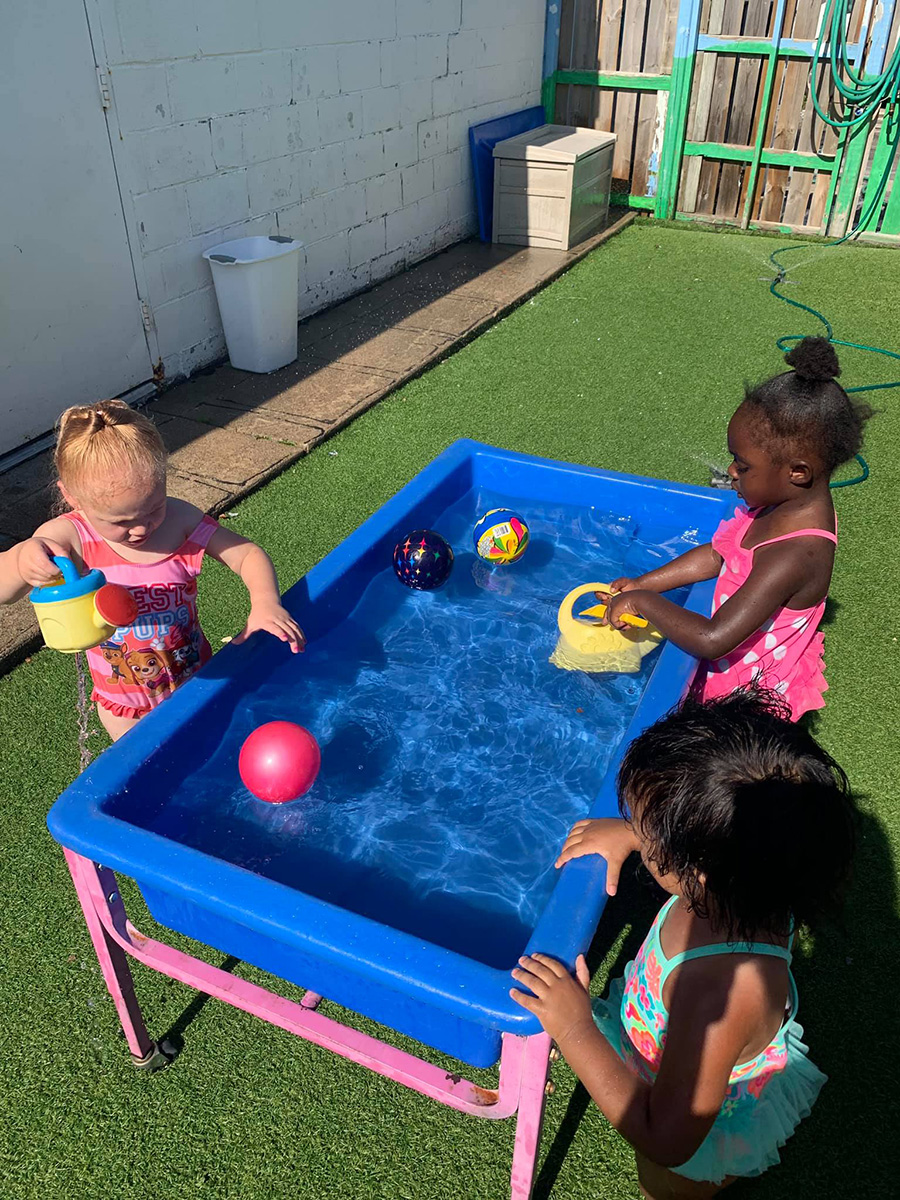
By Hayley Jackson, Extension Educator in Lancaster County
The days are getting hotter, and we are all looking for ways to cool off. Don’t have easy access to a pool? Not to worry! There are plenty of ways to engage in water play with children that don’t involve swimming. Water play is not only a fun way to stay cool in the summer heat, but it also has multiple benefits for children. Playing with water can help children develop their math and fine motor skills as well as explore the concept of cause and effect. Read more to learn about different experiences young children can have with water!
• Painting with Water — Fill a jar with water and bring paintbrushes outside. Find any cement area and use the water and paint brushes to paint on the cement. When it dries, you can start over and paint something new!
• Dumping and Pouring — Gather various materials that children can fill with water such as measuring cups, jars of various sizes, funnels and strainers. Fill a larger tub with 1-2 inches of water and then let the child spend time exploring water with all the materials in the tub. Watch as they explore concepts of measurement as well as work on their hand/eye coordination!
• Sink or Float — Fill a clear container with water and gather a few household items with varying densities. Items such as marbles, a toy car, a feather, a plastic eating utensil, a Lego, coins or a piece of dry pasta will work. Discuss with the child and then make a prediction about which items will sink in the water and which ones will float. This helps children learn about the density of objects and the scientific process of making predictions!
• Exploring with Ice — Using muffin tins, find small objects around the house and add one per muffin tin. Fill the tins with water and then place in the freezer. After 24 hours, take it out of the freezer and let children experiment with ways to get the small objects out of the ice. Provide tools such as spray bottles with hot water, salt and digging tools. Encourage children to describe their thought process as they experiment with how to “free” the objects from the ice.